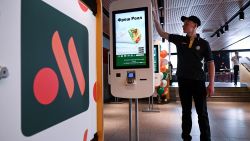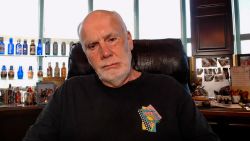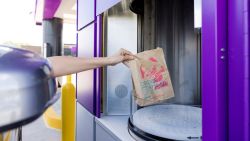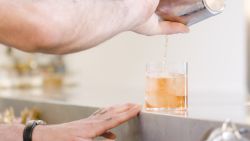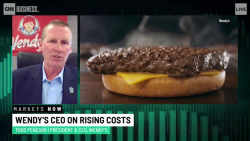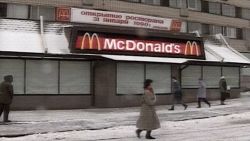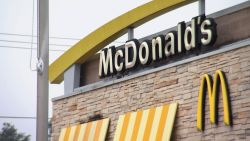Soylent is making a play for the mainstream.
With new products and a growing retail presence, Soylent has evolved from a tech company that sold food, as CEO Bryan Crowley put it in an interview with CNN Business, to a food company that is enabled by tech and science.
Soylent’s latest product, Soylent Squared, is a 100-calorie snack bar. Soylent calls it a “mini-meal” because it’s got 36 essential nutrients, including 26 vitamins and minerals, 9 amino acids, omega-3 and omega-6. People can eat one or two as a snack, or three to four for a complete meal, according to Crowley.
With its signature meal replacement powders and shakes, Soylent is targeting a specific demographic: College students, gamers and young professionals — particularly people who work in the gig economy and balance multiple jobs, and want affordable, nutritious food on the go.
But Soylent Squared, which launched this week, is “about expanding to a much broader audience,” Crowley said. “It’s actually less relevant for the hardcore Soylent consumers that use Soylent for a majority of their calories in the day.”
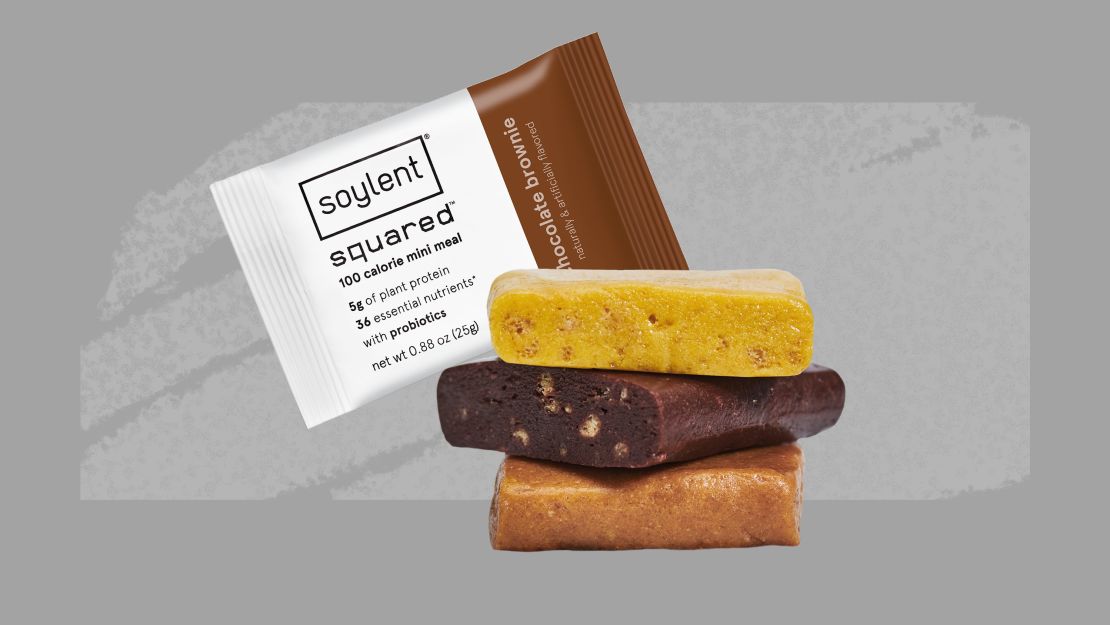
A snack bar is easier to sell to most consumers than a meal shake, Crowley reasons. Plenty of people eat them, and would be open to trying a new variety. Fewer people drink their meals, so rather than switching from one product to another, they’d have to introduce a new item to their diets altogether. That’s a higher barrier to entry.
And while the first version of the product was designed to be a life hack, the current iteration is supposed to fill what Crowley calls “food voids,” times in the day when people either skip a meal or reach for an unhealthy option, like a burger from a fast-food chain or a breakfast pastry — a challenging proposition. Crowley estimates people face food voids between eight and ten times a week.
For now, Soylent bars are only available online in 30-bar packs that cost $30. But Soylent hopes to sell them in stores, where people can stumble upon them, once it has a chance to refine the product based on customer feedback. They could be pricier in stores.
The meal bar comes in chocolate brownie, salted caramel and citrus berry. It tastes sweet and a bit waxy, like a protein bar. Crowley said the company is still working to improve recipes for its product, adding that Soylent wants to develop a savory product. It’s tricky to come up with non-dairy ingredients that mimic the taste of milk and sugar, Crowley said, without raising costs.
Soylent Squared is the second new product Soylent introduced this year. In January, Soylent launched Bridge, a 180-calorie drink designed to keep you sated between meals. Bridge is much less caloric than a regular Soylent meal-replacement drink, which has 400 calories, and could be an easier sell for people who don’t want to drink an entire meal.
The new products are a far cry from Soylent’s original powder.
When the company launched in 2013 it served a niche audience: busy Silicon Valley workers who wanted an affordable, nutritionally-optimized way to fuel their bodies. Soylent’s first product was a powder that could be mixed up with water, consumed as a bland, chalky shake and, conceivably, replace every meal.
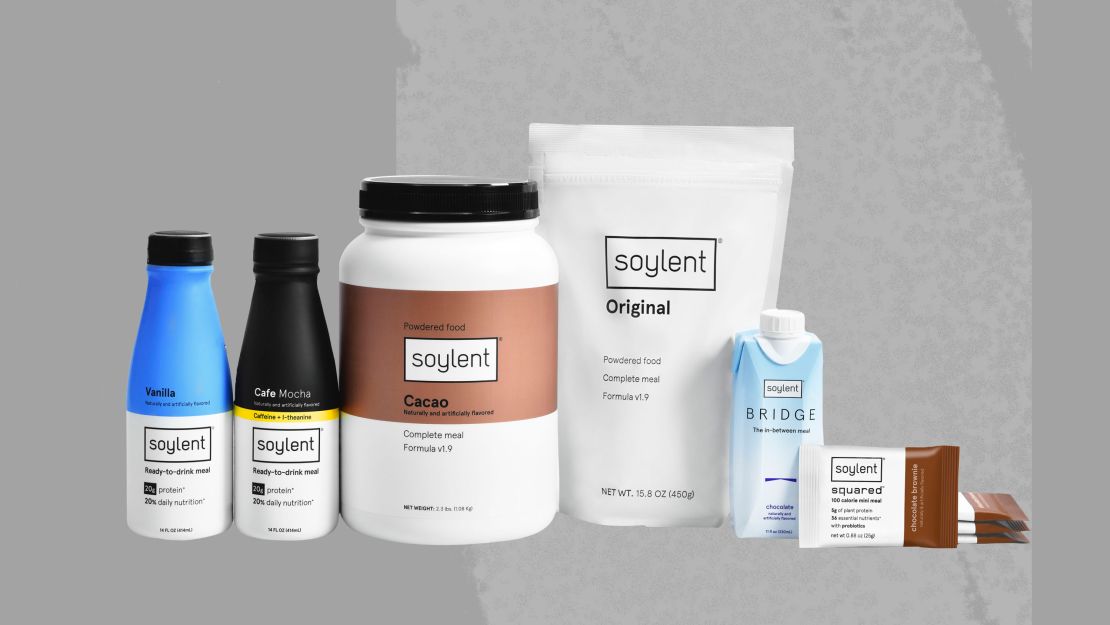
Now, Soylent still sells an improved version of the powder as well as ready-to-drink shakes in vanilla, cacao, strawberry and original. It sells caffeinated versions of the shake in mocha, vanilla and chai, in addition to the Bridge and bar products.
Soylent is a private company that doesn’t share how many people buy its products. It has disclosed that Soylent is available in more than 20,000 US retail stores, including Walmart (WMT), Target (TGT) and 7-Eleven locations, and that it sold more than $35 million worth of Soylent products on Amazon (AMZN) last year, according to Amazon (AMZN)’s figures. The company, which has raised $72.4 million in funding, wants its products to be available in offices and more retailers and to eventually go public.
Soylent struggled on the path from niche, futuristic food to snacks that could reach a mass market.
In August 2016, Soylent launched a 250-calorie snack bar using an ingredient sourced from algae. The ingredient made some people sick, so Soylent pulled the product a few months later. Soon after that, it paused sales of its signature powder after users complained of nausea, vomiting and diarrhea. The following year, Soylent was banned in Canada because the Canadian Food Inspection Agency said the product didn’t reach its standards as a meal replacement. Soylent is still fighting to get back into that market.
There are still plenty of Soylent skeptics, and the company itself has stopped recommending that people replace food with Soylent at every meal.
Crowley, who started his career at Anheuser-Busch (BUD), became Soylent’s CEO in 2017, has helped scale the company. He said Soylent maintains “the same principles of sustainability, science and technology,” it’s always had, despite its attempts to broaden the business.
Soylent is a plant-based product with a long list of ingredients. The bars include soy protein isolate, corn syrup, canola oil, whole oat flour, soluble corn fiber and more.
That list might turn off consumers seeking a natural diet, who might want products with fewer ingredients that aren’t genetically modified. It also puts Soylent at odds with trendy health foods that boast a short list of recognizable ingredients. RX Bar, for example, lists its ingredients — often nuts, fruit and egg whites — in large font on the front of its products. The startup has been acquired by Kellogg (K).
For its part, Soylent is proud to use genetically modified products. Like Impossible Foods and Beyond Meat, which have developed plant-based proteins that are supposed to taste like meat, Soylent sees plant-based or cellular alternatives to meat as the way forward. The question, Crowley said, is “how do we not get nutrition from the ground?”




